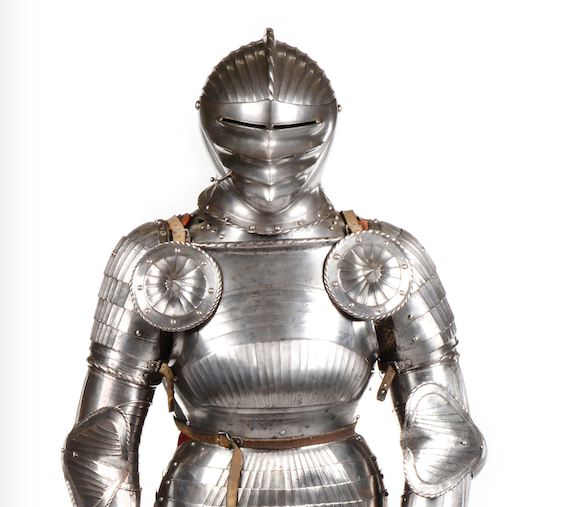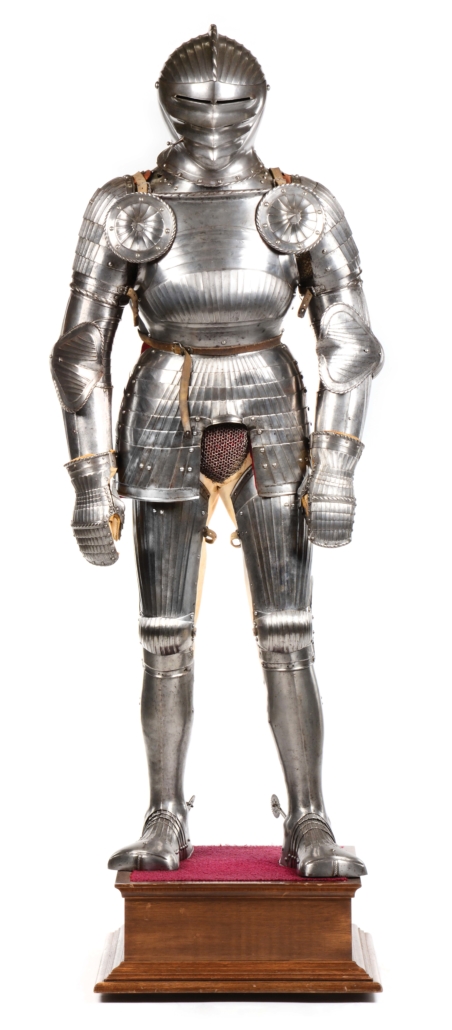
DENVER, Pa. – Gold and silver may set the standard for commodities on Wall Street, but medieval steel was the metal that ruled the day on January 16 at Morphy’s $2.3 million auction of the Susquehanna Collection. To the delight of a packed house that had gathered to bid on a 40-year collection of early Pennsylvania antiques and European heirlooms, a rare and outstanding early 16th-century composite suit of armor with royal provenance claimed top-lot honors at $270,600.
“The suit of armor was a constant source of interest in the run-up to the sale and a very popular attraction at the preview,” said Morphy Auctions founder and president Dan Morphy. “We were contacted by collectors from all over the world who wanted to bid on it. They were very familiar with its provenance and importance.”
The circa-1510 to 1520 Maximilian suit of armor, which is similar to an example shown in a book published by the Metropolitan Museum of Art titled Of Arms and Men: Arms and Armor at the Metropolitan 1912-2012, was assembled in the 1920s by Dr. Bashford Dean (1867-1928). Dr. Dean, who was the first president of the Arms & Armor Society and first curator of the Arms & Armor Gallery at The Met, used period elements in composing the historically accurate 75-inch-tall suit. Some of the components came from the distinguished collections of Carl, Prince of Prussia; and the Princes Radziwill, Nieswiez Castle, Lithuania. Its pre-auction estimate was $75,000-$150,000.
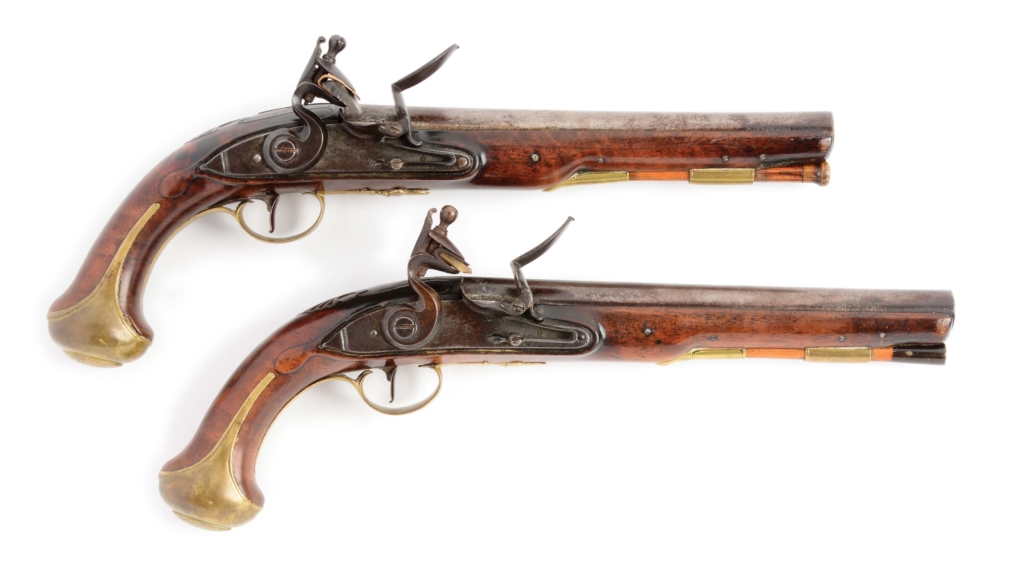
The 219-lot Susquehanna Collection boasted many exceptional and historically significant 18th-century firearms. A pair of Revolutionary War flintlock pistols (shown above) dated and marked for its original owner, “Robert Roberts 1775,” had once been owned by R.H. Coleman, president of Remington Arms Co., and appeared in the July 1972 issue of The American Rifleman. Roberts served in the militia and participated in several engagements in Maryland, as well as at the battles of Brandywine and Germantown in Pennsylvania. The coveted guns, which were accompanied by extensive documentation, sold above estimate for $110,700.

Leading the selection of first-rate Kentucky rifles was a Jacob Kuntz (1780-1876) design (above) with the Pennsylvania State Seal on its patchbox. Described by Dan Morphy as “undoubtedly one of the finest rifles Kuntz ever made,” it was crafted in Philadelphia but displayed many of the Lehigh Valley characteristics typical of firearms Kuntz made while learning his trade in Allentown, Pa. It sold above estimate for $61,500.

Another standout was a beautifully relief-carved Revolutionary War-era flintlock Kentucky rifle (shown above) signed “J. Ferree,” referring to a Lancaster County, Pa., gunsmith who produced guns and gun barrels under government commission during the Revolutionary War. Among its highly attractive embellishments are fleurs-de-lis, possibly a tribute to Ferree’s French Huguenot ancestry. The rifle surpassed its pre-sale estimate to reach $55,350.

An incredible collection of 18th-century powder horns was offered, none more profusely decorative than the polychrome-colored example (shown above) engraved with a map or plan of Havana that includes such landmarks and sites as “Mooro” (Morro) Castle, Shepherds Battrey (Battery) and New Store. Its main inscription reads: “The City Of Havana Illuminated At The Embarkation Of The British Troops July The 7th 1763.” A book example, the horn is attributed to Peter Robertson, a corporal in the 9th British Regiment posted in St. Augustine, Florida, during the French & Indian War and a presumed participant in the Battle of Havana, 1762-63. It sold at the upper end of its estimate range for $50,430.
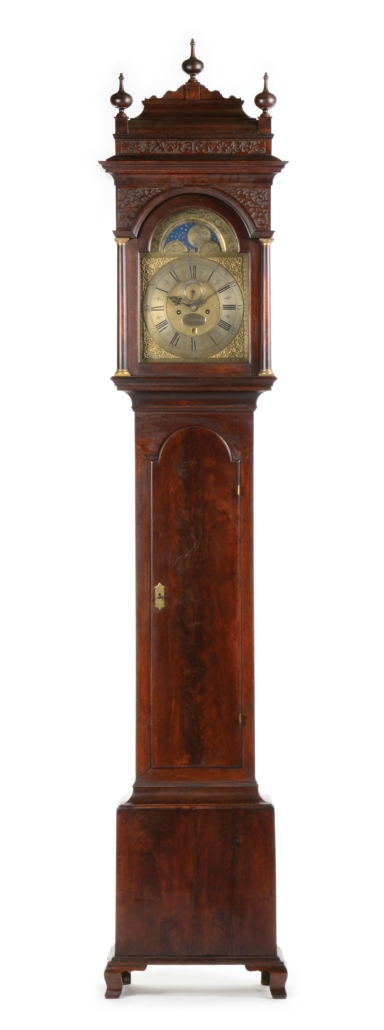
There was strong competition for a circa-1740 Philadelphia tall-case 8-day clock (shown above). Crafted from walnut with secondary tulip poplar and white pine, the 105-inch clock’s arched brass face depicts various phases of the moon and has an oval panel engraved with the clockmaker’s name, “Peter Stretch.” An important feature is its original ogee feet, which distinguish the clock as the earliest known example having that detail. The stately timekeeper more than doubled its high estimate, reaching $166,050.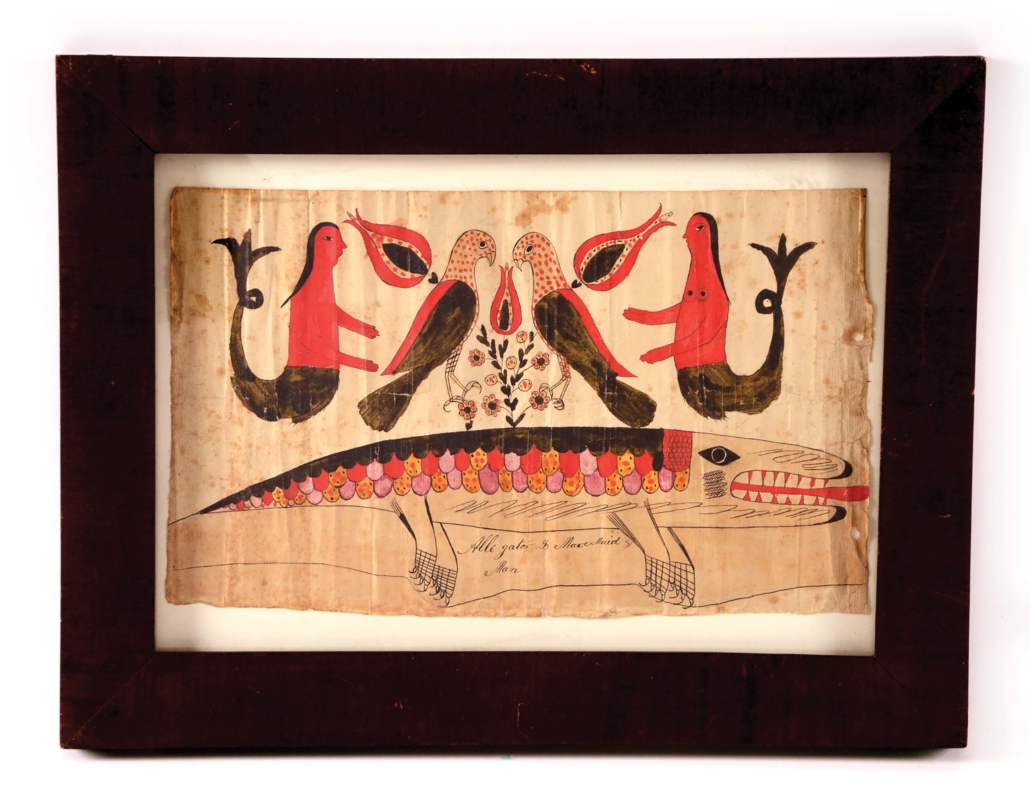
Fraktur drawing of an alligator and two mermaids, possibly by Jacob Otto of the late 18th-/early 19th-century Lancaster County, Pa., Otto family of fraktur artists. Sold for $19,200A charming drawing of an alligator and two mermaids (shown above) was given a possible attribution to Jacob Otto, a furniture maker and artist from the late 18th-/early 19th-century Otto family of Pennsylvania fraktur artists. “The drawing is thematically similar to several that are known to have been drawn by Jacob’s brother, Daniel, but this fraktur appears to be the work of a different hand, leading our experts to conclude that it might have been Jacob’s work,” Morphy said. The colorful fraktur sold just shy of its high estimate, for $19,200.
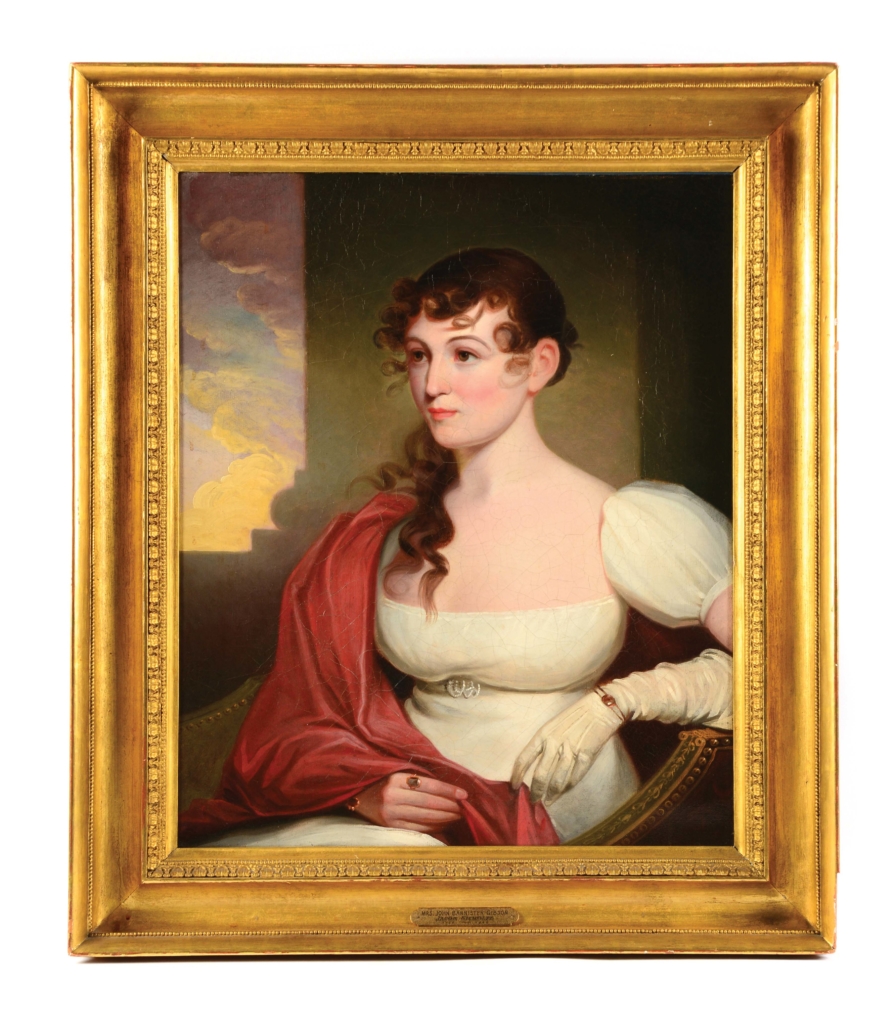
Quintessentially Pennsylvanian, a Jacob Eicholtz (Lancaster, Pa., 1776-1842) portrait of a sitter identified as “Mrs Gibson” depicts an elegant woman wearing tasteful, expensive gold jewelry and a red shawl draped over her white dress. Initially a coppersmith by trade and the son of a German immigrant who fought in the Revolutionary War, Eicholtz was known for his romantic portraits influenced by the styles of James Peale and Thomas Sully. The painting in Morphy’s sale sold for $19,200, almost twice the high estimate.
To discuss consigning to a future Morphy Auctions Americana, Firearms or Fine & Decorative Arts sale, call Dan Morphy toll-free at 877-968-8880 or email info@morphyauctions.com. Visit Morphy’s online at www.morphyauctions.com.
[av_button label=’Click to view the online catalog complete with prices realized’ link=’manually,https://www.liveauctioneers.com/catalog/156699_the-susquehanna-collection/’ link_target=’_blank’ size=’medium’ position=’center’ label_display=” title_attr=” icon_select=’no’ icon=’ue800′ font=’entypo-fontello’ color=’theme-color’ custom_bg=’#444444′ custom_font=’#ffffff’ av_uid=’av-73xheod’ id=” custom_class=” admin_preview_bg=”]


